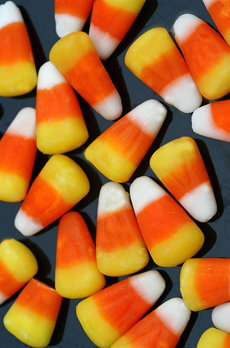HALLOWEEN: Best Candy For Halloween
|
What Should You Hand Out On Halloween?
We’ve already weighed in on what we think is the best Halloween candy for those who enjoy the best. For trick-or-treat candy for kids, MSNBC has nominated the five best and five worst of the popular kids’ candies. Their evaluation was based on the saturated fat and sugar content. |
 Candy corn is fat-free, though high in sugar. But Baby Ruth and Snickers have as much or more sugar—and lots of saturated fat. Photo by Liz West | Wikimedia. |
|
|
This custom comes to us from the ancient Celts (who date to 450 B.C.E. and were prevalent in Ireland and Scotland from 1500 C.E. to 1800 C.E.). They believed that on October 31st, the boundaries between the worlds of the living and the dead overlapped, and the deceased came back to life and caused havoc. The night was known as All Hallows Even (evening). To avoid the ghosts, fairies, demons and other spirits that roamed the countryside that night, people began to wear masks and costumes so they would not be recognized as human by the “walking dead.” To keep the spirits away, people also placed candles in their windows, using hollowed-out turnips and other vegetables as the holder (pumpkins are an American tradition). In seventeenth- and eighteenth- century Scotland, guisers—people who had disguised themselves from the spirits—would parade from house to house, singing and dancing to intimidate the spirits. “Guising” evolved into a masquerade for children, who disguised themselves in costumes and went from door to door for round loaves called soul cakes, fruit and/or coins. They carried candles in scooped-out turnips to light their way. If the guisers were refused a treat, they would retaliate with a prank “trick”—hence the term “trick or treat.” According to Magick7.com, traditional tricks in England included stopping up chimneys with pieces of turf, blowing smoke through keyholes and smashing glass bottles against walls. Immigrants from the U.K. brought guising to America. All Hallows Even became Halloween. The first printed record of “guising” in North America was in 1911. “Trick or treat” first appears in print in 1927. And the rest is Halloween history. |
||


